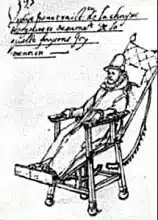For some reason, don’t ask me why, I have been thinking a lot about time-travel and what would happen if, like a character from a fiction novel, I found myself having tea with the old lady down the road and consuming ceremonial stale biscuits she’s kept in a tin for fifteen years to somehow travel through time. While it would be a great adventure – would it be accessible?
It seems like we have been fighting for accessible living and the concept of universal design for ages, yet sadly it is still an afterthought of many companies and architects. As it turns out, this fight has been going on for much longer than we probably realise and accessibility is not a new concept!
Give us a hand…or a toe

As it turns out, Egypt wasn’t the only country to try and meet access needs of its people, found near Turpan, China, a 2,200-year-old prosthetic leg made of wood, leather, and finished with a real oxen hoof on the end for added stability. This hardy prosthetic allowed for travelling by horse and showed enough wear for researchers to surmise that the man had worn it for quite some time before his burial.
Man’s best friend
Dogs are known as man’s best friend; so it is no surprise that service animals have been a key aspect of disabled people’s lives since the dark ages – no really. The oldest known depiction of a service dog, a guide dog in particular, can be found upon a fresco in Pompeii dating from around 79 CE. Working and service dogs were a common and vital part of Medieval and Renaissance society, with owners being just as indulgent and loving as their modern counterparts today.
Looking for a wheely good time?

Almost ninety years later in 1655, twenty-two-year-old watchmaker Stephen Farfler, built a self-propelling three-wheeled wheelchair. Born in Germany in 1633 and paraplegic, Farfler designed it to move by turning handles in the front connected to a gear which propelled him forward.
So while highly unlikely that you or I would be propelled through the time, we can at least take some comfort in knowing that it won’t be a totally inaccessible world. It does make you think, after centuries of trying to make access a thing for people with disabilities – why are we still fighting!?

